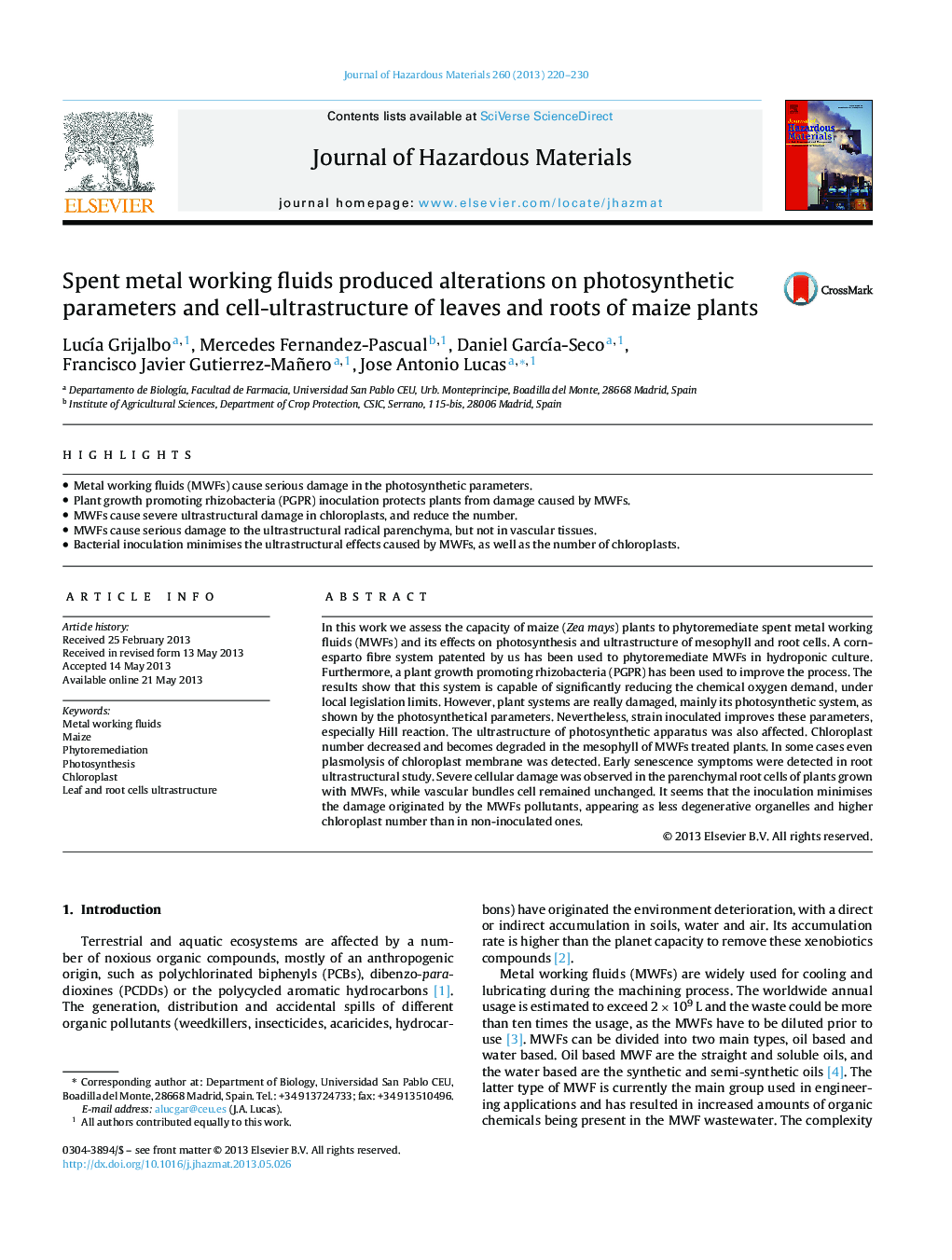| Article ID | Journal | Published Year | Pages | File Type |
|---|---|---|---|---|
| 6972351 | Journal of Hazardous Materials | 2013 | 11 Pages |
Abstract
In this work we assess the capacity of maize (Zea mays) plants to phytoremediate spent metal working fluids (MWFs) and its effects on photosynthesis and ultrastructure of mesophyll and root cells. A corn-esparto fibre system patented by us has been used to phytoremediate MWFs in hydroponic culture. Furthermore, a plant growth promoting rhizobacteria (PGPR) has been used to improve the process. The results show that this system is capable of significantly reducing the chemical oxygen demand, under local legislation limits. However, plant systems are really damaged, mainly its photosynthetic system, as shown by the photosynthetical parameters. Nevertheless, strain inoculated improves these parameters, especially Hill reaction. The ultrastructure of photosynthetic apparatus was also affected. Chloroplast number decreased and becomes degraded in the mesophyll of MWFs treated plants. In some cases even plasmolysis of chloroplast membrane was detected. Early senescence symptoms were detected in root ultrastructural study. Severe cellular damage was observed in the parenchymal root cells of plants grown with MWFs, while vascular bundles cell remained unchanged. It seems that the inoculation minimises the damage originated by the MWFs pollutants, appearing as less degenerative organelles and higher chloroplast number than in non-inoculated ones.
Related Topics
Physical Sciences and Engineering
Chemical Engineering
Chemical Health and Safety
Authors
LucÃa Grijalbo, Mercedes Fernandez-Pascual, Daniel GarcÃa-Seco, Francisco Javier Gutierrez-Mañero, Jose Antonio Lucas,
